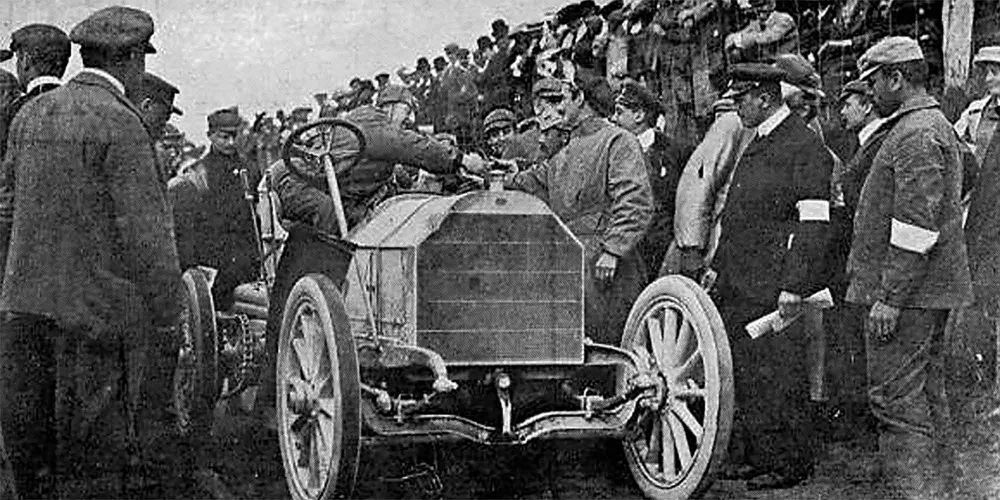
10 October, 2024

Leanne Blaney
Posted: 14 April, 2017

Leanne Blaney recently completed her Ph.D. thesis as a Government of Ireland Postgraduate Scholar in the School of History, University College Dublin. Her dissertation was entitled, “The Impact and Influence of the Motorcar Upon Twentieth Century Ireland and Irish Society.” She joins us today to help mark our #LoveIrishResearch theme for the month of April “Planes, Trains and Automobiles.”
Cars changed the world. And since their invention in 1885, no other mode of transit has managed to exert greater influence on the world and its population. Originally viewed as a novelty for rich men, cars have become a necessity of daily life in the 21st century. Roads have been built across deserts, jungles and swamps to facilitate their movement. Thousands of people depend on cars for their livelihood and millions of others look favourably on acquiring homes with ‘road frontage’ so as to ease their daily movement and travels.
The history of Ireland and the motorcar is one which has previously been largely unexamined by academics. In part this is because compared with international counterparts such as Britain, France and Germany, Ireland’s motor manufacturing industry has remained relatively small. Indeed, Ireland’s only indigenous motor manufacturing company – Belfast-based Chambers Motors, ceased manufacturing cars and other commercial vehicles in 1929. Motor assembly (the assembly of a vehicle from imported parts manufactured in another manufacturing facility) did provide a significant proportion of the Irish population, especially in Cork and Dublin, with employment following the introduction of import restrictions under the Anglo-Irish Trade War in 1932, and the later implementation of protectionist tariffs which remained in place until Ireland joined the EEC in 1972. Yet those figures pale when compared to the 792,500 jobs and €404 billion generated by the German automotive industry in 2015 alone.
Still, my research argues that the role played by cars in developing Ireland should not be underestimated. Following the arrival of the first car into Ireland in 1895, many Irish people embraced the motorcar as they realised the benefits that rapid, personal transit could provide. Irish MPs spoke in Westminster of hopes that Irish dairy farms would enjoy greater profits as the utilisation of cars in transporting milk churns would lessen the risk of the milk spoiling. Meanwhile, those involved in the Irish tourist industry – an industry now worth over €7 billion to the national economy – recognised how cars could enable tourists to travel to parts of the island which had previously been inaccessible. Furthermore, figures such as Frederick Crossley, (the father of Irish Tourism), R.J. Macredy (editor of the Irish Cyclist and Ireland’s first car magazine The Motor News) and the Earl of Mayo formed the Irish Road Improvement Association, with the ambition of improving Irish roads to a satisfactory standard for visiting international cyclists and motorists.
It should also be acknowledged that Ireland has played a substantial role in popularising the car. After all, only for the success of Ireland’s first international motor race – the 1903 Gordon Bennett Cup Race (pictured above) – which demonstrated that large public audiences could attend motor racing events in safety, Formula One racing would never have had the chance to develop.
Cars have been intrinsically linked with almost all of the key events which occurred in Ireland during the 20th century. Including the 1916 Easter Rising; Michael Collins’ assassination in 1922; John F. Kennedy’s 1963 visit to Ireland and Pope John Paul II’s 1979 visit – when the pontiff was famously driven around in a specially constructed ‘Popemobile’ made within the Cork Marina Ford plant. Frequently cars have been utilised in Ireland in a manner which differs from the car’s initial purpose of simply providing transport. The Troubles for instance, witnessed cars being employed as weapons of war with petrol bomb devices planted within/under them, a practice currently being replicated in many contemporary terrorist attacks.
Ultimately understanding the history of the car in Ireland adds another dimension to our comprehension of our history and Ireland’s role in the world.
Disclaimer: The opinions expressed in our guest blogs are the author’s own, and do not reflect the opinions of the Irish Research Council or any employee thereof.